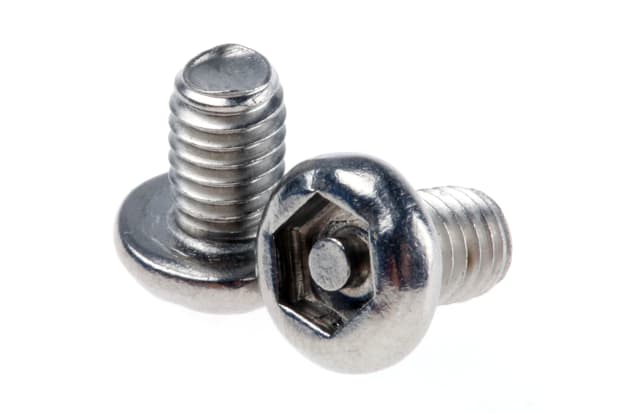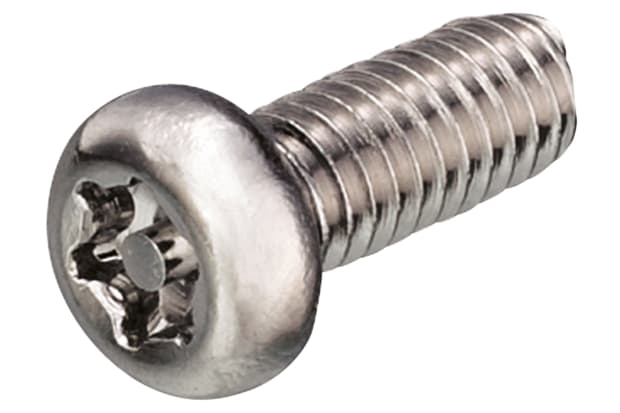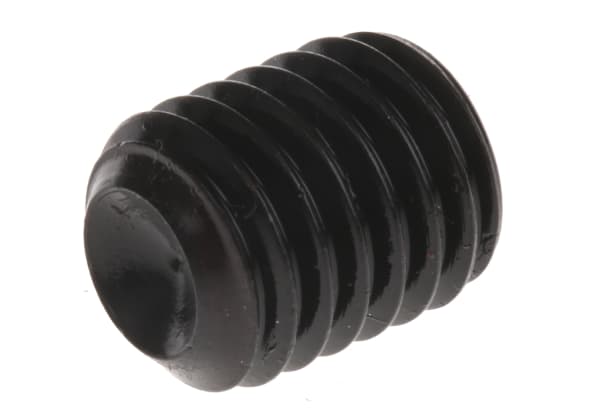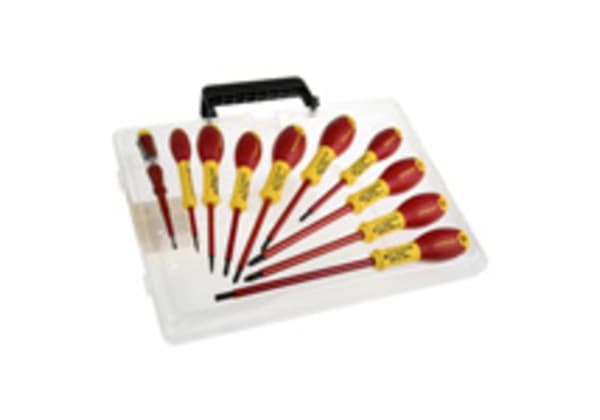- Published 11 Jan 2023
- Last Modified 9 Aug 2023
- 6 min
A Complete Guide to Security Screws
We’ve created this helpful guide to help you understand the different types of security screws and how to use them.

What are Security Screws?
Security screws feature special heads that make them both significantly harder to remove and more resistant to pressure or wear. Typically made from steel with a zinc coating, security screws are also known as tamper-proof, anti-tamper, and anti-theft screws. They are part of a broader family of professional security fixings.
How Do Security Screws Work?
The heads of security screws are designed to be completely incompatible with standard slot or Phillips screwdrivers. Instead, they require specialist screwdrivers or drill bits for installation or removal.
Uses of Security Screws
High-security screws have a variety of uses, including:
- Shielding potentially dangerous components – for example, junction box wiring, factory machinery blades, and computer internals
- Reinforcing valuable items, making theft and misuse harder – for example, vehicle registration plates
- Discouraging vandalism
- Reinforcing displays or other equipment routinely exposed to high winds – for example, billboards or CCTV cameras
- Reinforcing load bearing storage equipment – for example, rack mounts
Types of Security Screws
Tamper-proof screws are available in a variety of designs and types. Let’s take a look at some of the most common screw head shapes:

Torx Screw
The torx is perhaps the most widely used type of security screw. It is also known as the star head or star drive screw because the six-pointed indentation on the head resembles a star.
The torx head was devised in 1967 following the invention of automatic screwdrivers. With six points of contact, torx heads provide compatible screwdrivers with significantly greater leverage, reducing the tendency to cam out (to slip out of the indentation under torque pressure). Camming out had previously been seen as a way to minimise damage to screw heads, but mechanical screwdrivers allow torque to be automatically limited.
Torx screws are available in a wide range of sizes. These are indicated by the letter T or Tx, and range from less than one millimetre (T1) across the head up to T100, which is a full 22mm in size. The most common sizes are:
- T10: 2.74mm (0.107 inches)
- T15: 3.27mm (01.128 inches)
- T25: 4.43mm (0.173 inches)
Some designs also feature a central pin.
Common uses of the torx screw include vehicle engines, braking systems for bicycles, and casing for computers and consumer electronics.
How to Remove Security Torx Screws
To remove – or indeed, tighten – torx screws, you will need compatible screwdrivers. These are called torx drivers or star head screwdrivers. Use a firm grip to tighten or loosen the screw. It’s also worth noting that pin torx heads may not be compatible with all torx drivers.
One-Way Screws
One-way security screws are designed to stay in place once installed. Part of the head curves away; the section which lies in the direction that a screwdriver would be turned to remove the screw, thereby making the head impossible to grip.
How to Remove One-Way Screws
To remove a one-way screw, you will need to apply torque via a pair of pliers. This will require a firm grip and you may need to file parts of the screw head for greater purchase. Alternatively, obtain a specialist extraction tool. These can be difficult to locate, but they will remove one-way screws relatively quickly.
Spanner Screws
Spanner screws feature a distinctive double indentation in the head. These earned this model its common alternative names – snake eye screw and pig nose screw.
Common uses of the snake eye bolt include vehicle licence plates, building and vehicle grills, and public facilities.
How to Remove Spanner Screws
Spanner screws can only be installed or removed by specialised, compatible drill bits with dual pins for each hole. The bits are fitted into a spanner screwdriver with interchangeable heads.

Button Head Screws
Button head screws are light models, featuring a small central indentation which requires minimal torque or the screw will burr out or sustain other damage.
Button head screws are ideal for use in sensitive locations where larger screws could damage surrounding material – for example, safety harnesses. They can loosen in some circumstances, however, so the addition of threadlock rings may be appropriate.

Countersunk Screws
Countersunk screws are designed so that the head will sit flush (level) with the material into which it has been inserted.
This means that they can then be covered with a screw cap or piece of wood, making countersunk screws especially difficult to access or remove. This design is also known as the flat head screw.

Flanged Button Head Screws
Flanged button head screws feature a round, domed head with protruding flange (collar). The dome includes several indentations for grip by a specialist screwdriver or bit.
The large head allows the application of higher torque during installation and removal, making this a good design for stronger, larger screws with heavy threading.

Hex Socket Cap Screws
Hex socket cap screws are security designed for use with spanners.
They feature either solid hexagonal bolt heads or round, threaded heads for use with a hex wrench (a thin, bar-shaped design).

Pan Head Screws
Pan head screws have a flat head with rounded sides and a small, four-point indentation.
They are primarily designed as socket-like, secure fixings for use with machinery.
Popular Brands
Many different brands offer security screws, so it is important to select the best fit for your requirements. Some of the most popular security screw brands include:
FAQs
What are Self-Tapping Security Screws?
Self-tapping security screws are designed for use in situations where no pre-existing hole has been drilled or tapped. The head of the screw is designed to tap out a hole for the screw as it is inserted. This should create a stronger bond between the screw and the panel or wall into which it has been inserted. Some self-tapping security screws will even work with wood.
What Types of Screw Heads are There?
Multiple types of screw head are available, each with different characteristics and strengths. When choosing the right screws for your job, ensure that you also have access to a compatible screwdriver with a matching head.
Here are some of the most common screw heads:
- Slotted Screws – this is the oldest, most traditional form of screw head; a simple, indented line. They will become unusable if the slot burrs over
- Phillips Screws – these familiar screws provide greater leverage because there are four points of contact, not just two. However, they can also burr
- Hex – hex heads extend beyond the surface of the screw and feature a hexagonal pattern, with a corresponding screwdriver
- Square – these feature a square-shaped indentation, providing a firm grip
- Pozi – versatile Pozidriv screws feature no less than eight points of leverage, providing significantly better grip than the more familiar Phillips head
What is the Smallest Torx Size?
The smallest torx size is the T1, which is just 0.81mm (0.031 inches).
Where to Next?
Related links
- A Complete Guide to Machine Screws
- The Complete Guide to Security Cables
- A Complete Guide to Wood Screws
- A Complete Guide to Commercial Security Lighting
- RS PRO Plain Button Stainless Steel Tamper Proof Security Screw, M5 x 12mm
- Hammond Tamper Proof Security Screw
- Schmersal Tamper Proof Security Screw
- RS PRO Passivated, Zinc Plated Pan Steel Tamper Proof Security Screw






